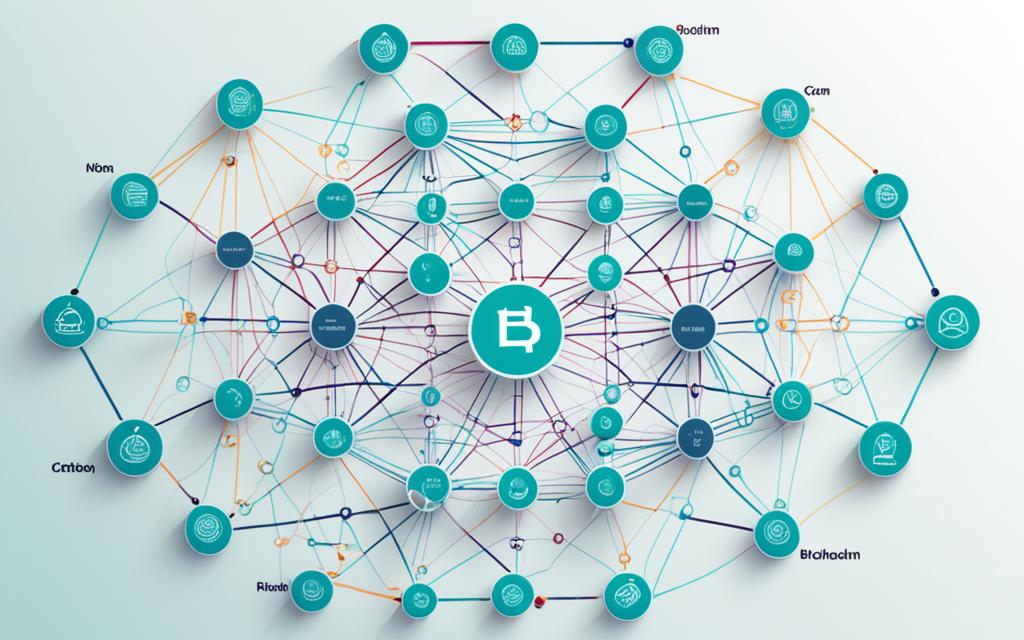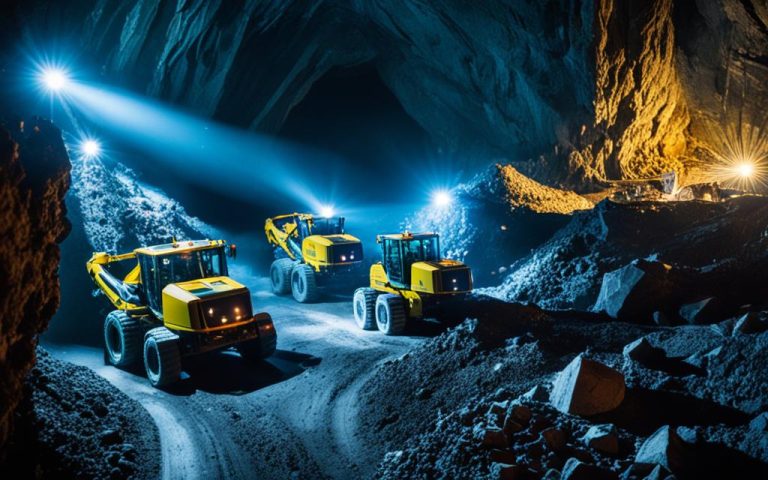A blockchain node is a combination of a device and a stakeholder that helps run a decentralized network’s software. They act as the guardians and builders of the blockchain’s structure. Their job is to agree on the ledger’s contents, check transactions, save data, and keep the network honest and intact.
Nodes are crucial for the network’s security, function, and distributed control. They ensure everyone has the same, up-to-date view of the blockchain. Without nodes, a blockchain can’t operate properly.
The network has various nodes, each with unique duties. These include:
- Archival full nodes: They store the whole blockchain history. Types include authority, miner, staking, and master nodes.
- Mining nodes: They confirm transactions through a proof-of-work system. Miners solve puzzles to validate transactions and earn cryptocurrency.
- Pruned full nodes: These nodes free up space by deleting old block data. They prioritize security.
- Light nodes: They process transactions quickly and depend on full nodes to work.
- Master nodes: They check transactions and keep records without creating new blocks.
- Staking nodes: They lock up crypto to help authenticate transactions.
- Lightning nodes: These handle transactions off the main chain to reduce overload.
These nodes, along with authority nodes, super nodes, and more, enhance a blockchain network’s performance and functionality.
Interestingly, not just computers can be nodes. Devices like routers and servers that have an IP address can join as nodes too.
Setting up a node as a person or a company makes the blockchain more open and community-based. While Bitcoin encourages everyone to participate, networks like Ripple limit who can be a node for oversight reasons.
In networks with lots of nodes, controlling more than half is nearly impossible. The spread-out nature of nodes and their rules make taking over very unlikely.
In short, nodes form the infrastructure of a blockchain, offering trust, security, and productivity. Their varied roles and features spread out control, showcasing blockchain as a revolutionary tool for many sectors.
Types and Functions of Blockchain Nodes
Blockchain networks use various nodes for security and integrity. Each node has a key role in the blockchain, ensuring transactions are correct and reliable. We’ll look into the different blockchain nodes and their roles:
Full Nodes
Full nodes are the backbone and keep all blockchain data. They check the whole blockchain history on their own. They validate all transactions to keep the network safe and support other nodes.
Light Nodes
SPV nodes or light nodes work on devices with less power. They depend on full nodes to check transactions. Light nodes keep some blockchain data and use SPV for validating transactions, helping users without the full blockchain.
Miner Nodes
Miner nodes are key in proof-of-work blockchains like Bitcoin. They confirm transactions, add new blocks, and earn cryptocurrency. Mining needs special equipment to solve tough puzzles and secure the network.
Pruned Full Nodes
Pruned full nodes help run the network with less data. They remove old blocks to save space but still validate transactions. This helps with storage while keeping the network running well.
Archival Full Nodes
Archival full nodes keep all transactions ever made. They quickly access smart contract info, helping developers and users. These nodes are great for looking at past transactions and blockchain history.
Authority Nodes
Blockchain members pick authority nodes for managing the network. They have full identity info and lead in decision-making. They ensure the blockchain runs smoothly and agreements are met.
Master Nodes
Master nodes manage but don’t add blocks. They handle smart contracts and governance, keeping the blockchain secure. They need to put down money to show they are serious about helping the network.
Staking Nodes
In proof-of-stake systems like Ethereum, staking nodes hold crypto and approve transactions. They help secure and agree on network operations. Staking nodes are vital for blockchain upkeep and getting consensus rewards.
Lightning Nodes
Lightning nodes focus on transactions outside the main network. They allow quick, cheap payments between users, improving blockchain’s reach and efficiency.
Super Nodes
Super nodes have special duties in certain networks. Their tasks vary with each blockchain’s needs. They keep networks connected and data moving smoothly.
Different blockchains need different node types for their unique needs. For example, R3 Corda and Hyperledger Fabric focus on consensus and security in their nodes. By working together, blockchain nodes make the network accurate, secure, and easy to use. This teamwork boosts blockchain’s growth and acceptance.
Importance and Benefits of Blockchain Nodes
Blockchain nodes keep decentralized networks running smoothly. They stop one authority from controlling everything. This makes the network fair for everyone.
Nodes check transactions, agree on what’s true, and store data. They’re the network’s guardians. By checking transactions, they keep the network safe from attacks.
Having more nodes means a stronger, more spread out network. If some nodes fail, others keep the network alive. This makes the network very reliable.
Nodes also let people have a say in network decisions. This makes sure the network works well for everyone. It’s like a democratic system for technology.
In short, blockchain nodes are the backbone of blockchain networks. They make the network safe, work well, and be fair. Without them, decentralization wouldn’t work.
FAQ
What is a blockchain node?
A blockchain node is a combo of a device and a stakeholder. They run the protocol software of a decentralized network. Nodes keep the network running smoothly.
What is the primary function of blockchain nodes?
Nodes main job is to keep the public ledger correct. They check transactions, store data, and keep the network honest and transparent.
What are the different types of blockchain nodes?
Nodes come in various types like full, light, miner, and others. Each plays a different role in the network.
What do full nodes do in a blockchain network?
Full nodes handle all of a blockchain’s transaction history. Archival and pruned full nodes store all or part of it, respectively.
What are light nodes?
Light nodes depend on full nodes to confirm transactions. They are smaller versions.
What is the role of miner nodes?
Miner nodes work on creating new blocks and validating transactions.
What are authority nodes, master nodes, and staking nodes?
These nodes have special roles and powers in different blockchains. They help manage the network’s rules.
How do lightning nodes facilitate transactions?
Lightning nodes speed up transactions while reducing costs. They work off the main chain.
What is the function of super nodes?
Super nodes do specific, important tasks in the network.
Why are blockchain nodes important?
Nodes are key to keeping a decentralized network running well. They prevent any one entity from having too much control.
How do blockchain nodes enhance security?
Nodes increase security by checking and confirming transactions. This stops fraud and hacking.
What are the benefits of having more blockchain nodes?
More nodes make a network stronger and less centralised. This is good for everyone.
Do blockchain nodes enable governance mechanisms?
Yes, nodes allow for governance in the network. This lets stakeholders have a say in decisions.



















